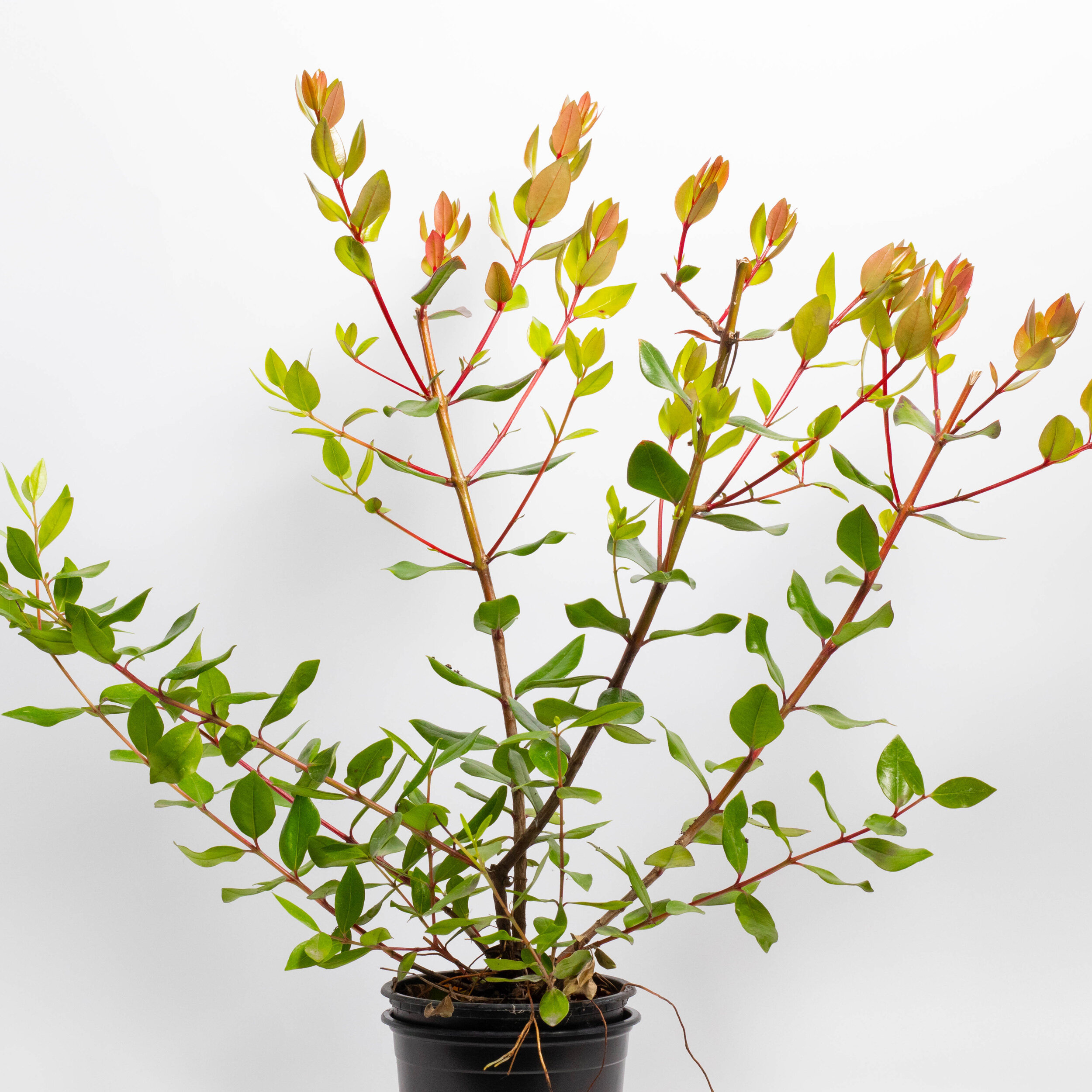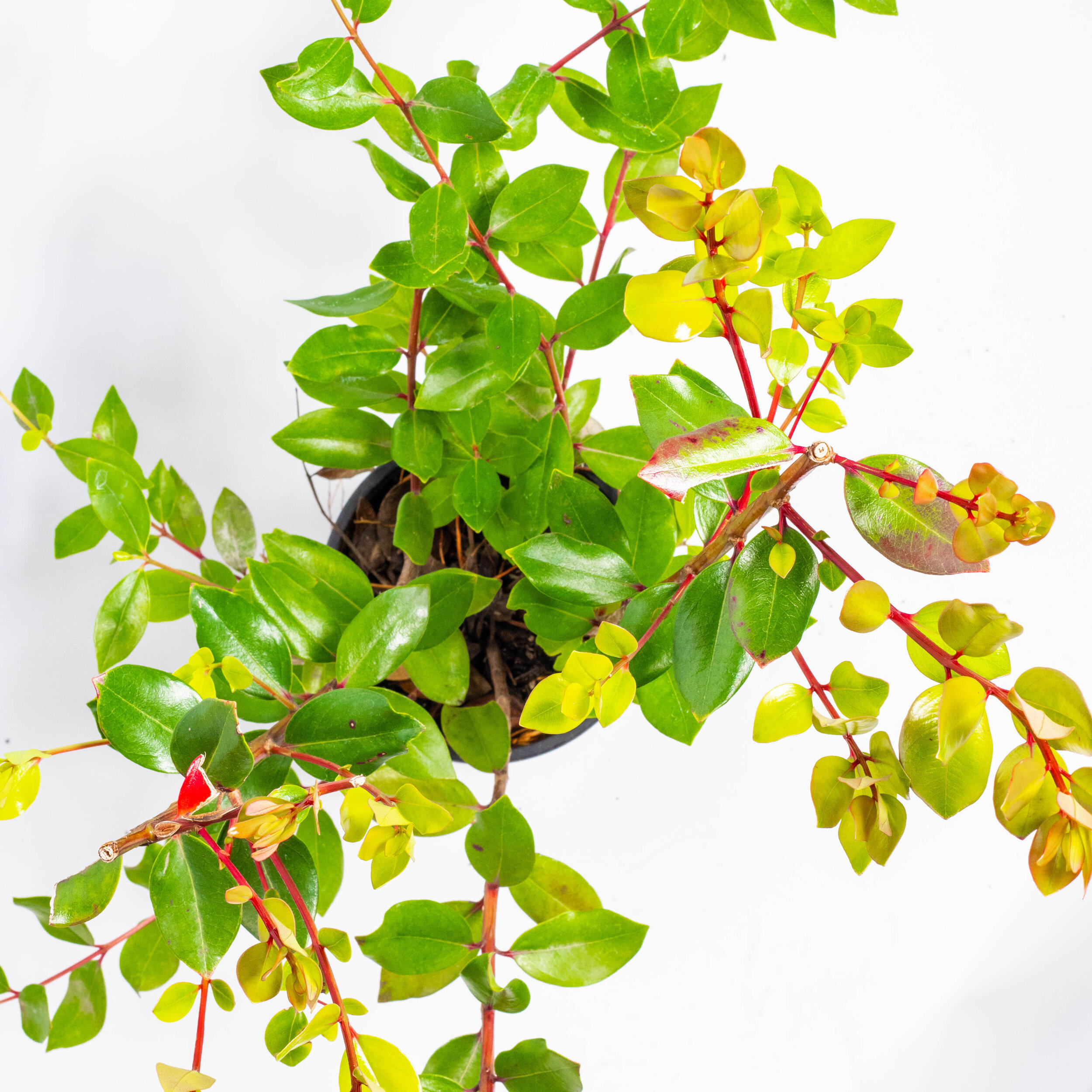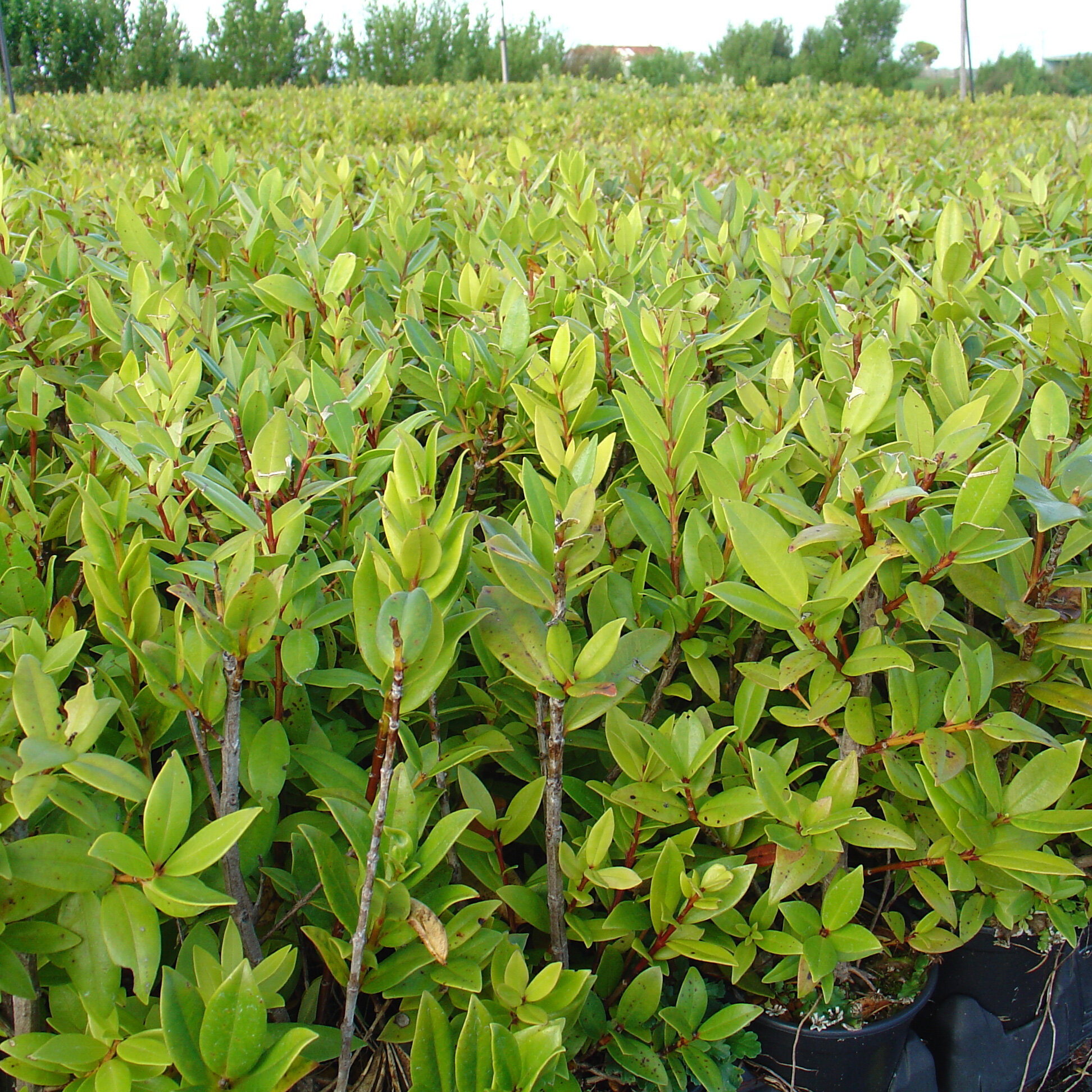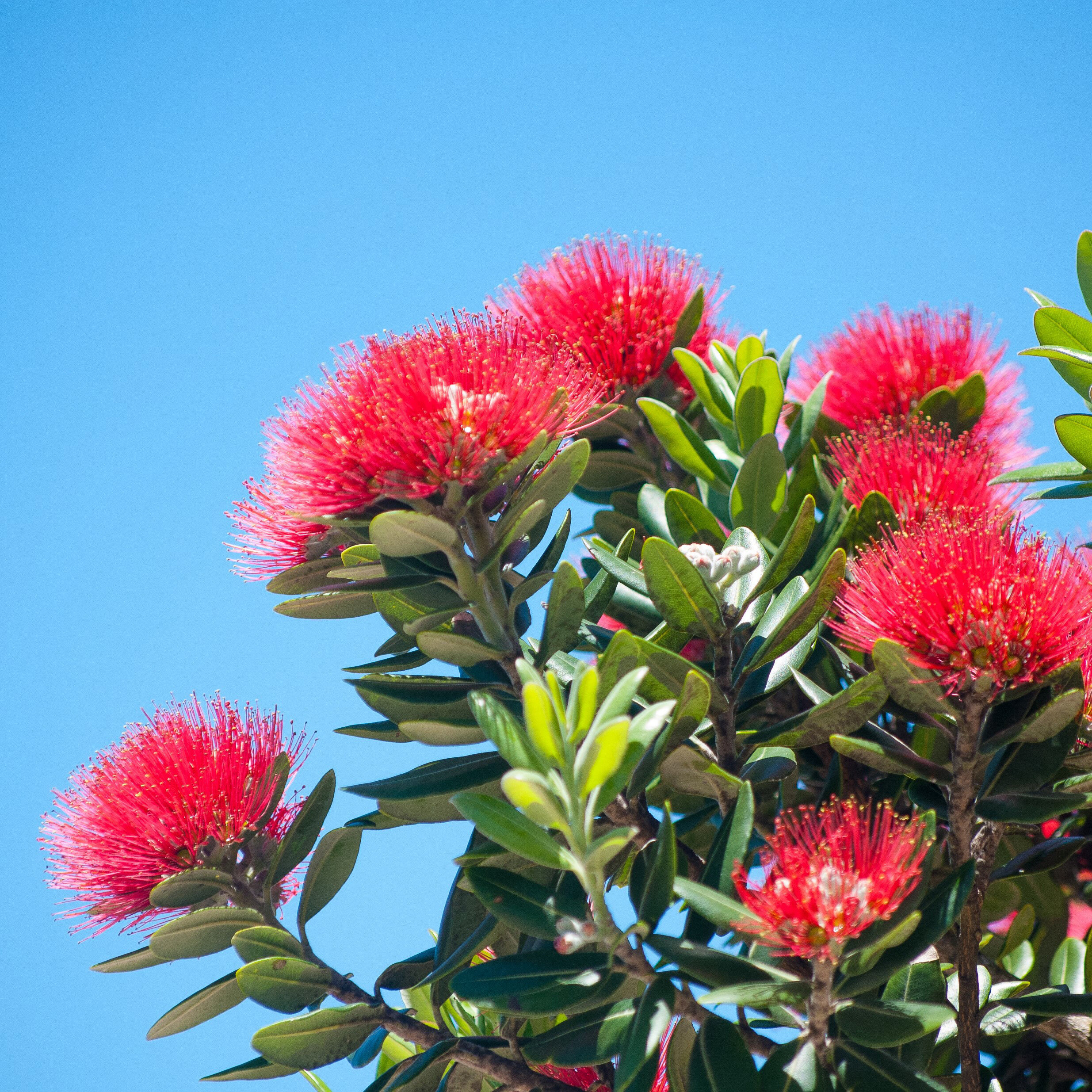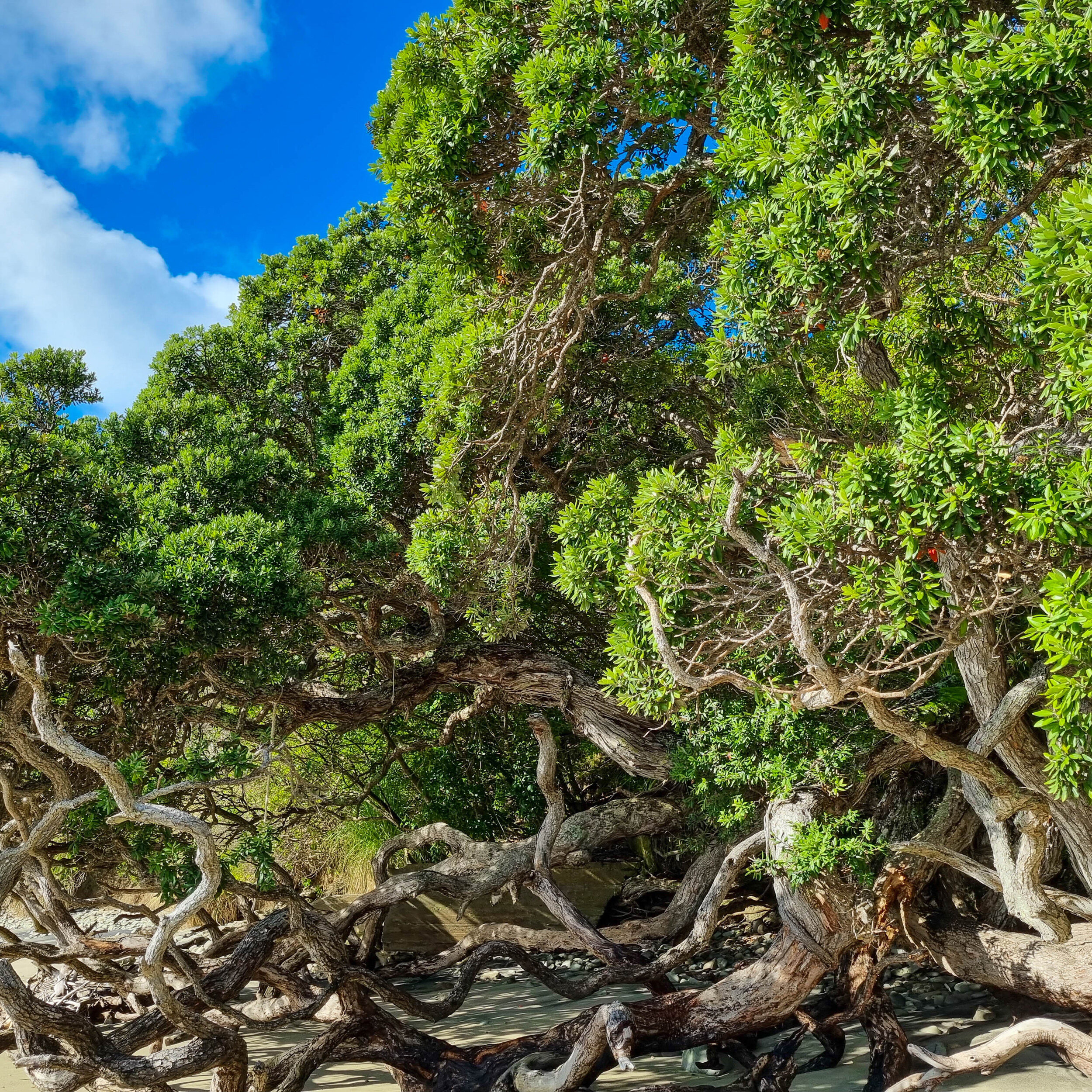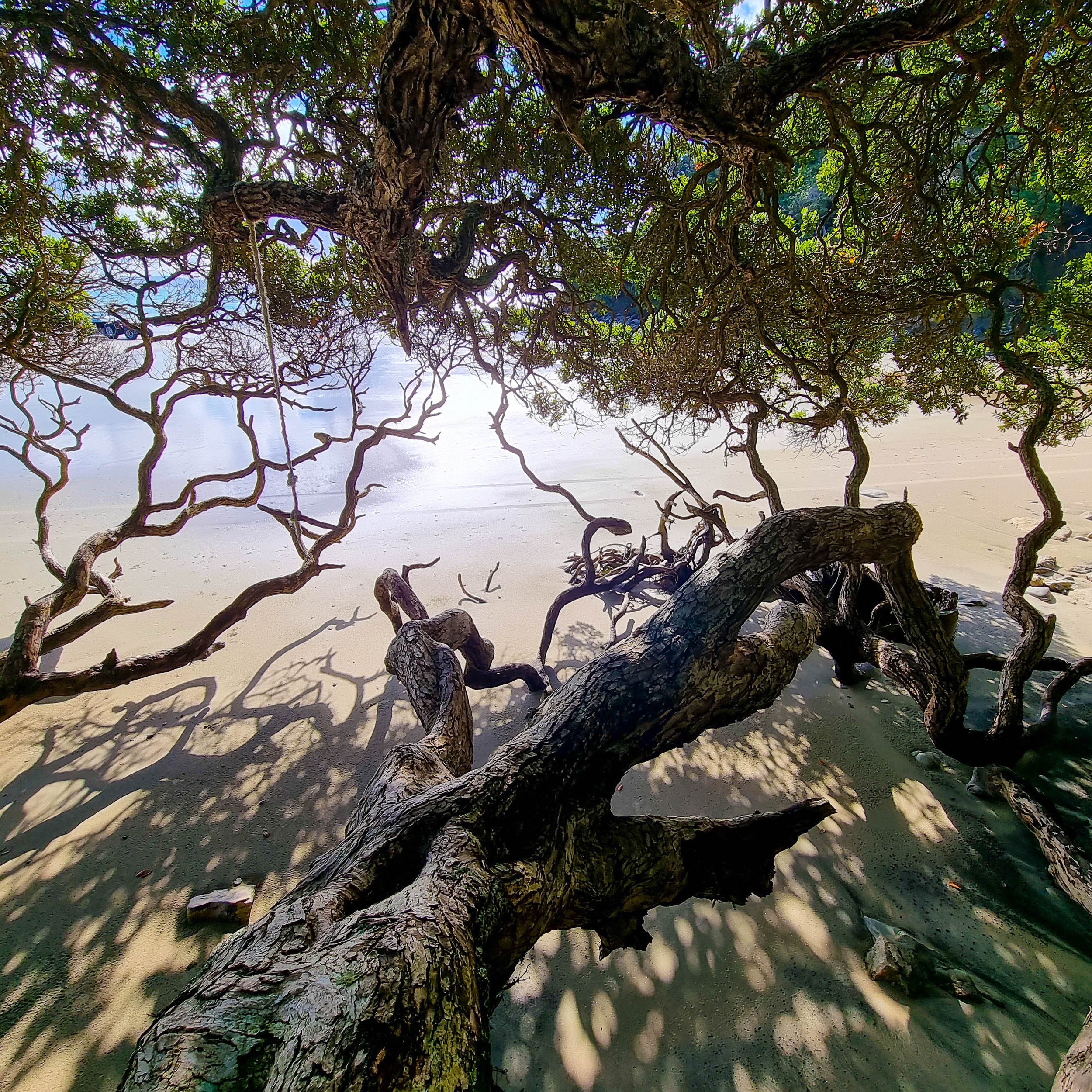Metrosideros excelsa
Pohutukawa, NZ Christmas tree
Metrosideros excelsa, commonly known as pohutukawa, seems to epitomise the New Zealand summer lifestyle, conjuring up pictures of sunny sandy beaches overhung with the ‘Christmas tree’s’ spreading branches atop splendid gnarled trunks. Pohutukawa is very much a tree of coastal areas, where it is often seen clinging to barren cliffs .
Flowers cover the tree in early summer, ranging from vivid red to crimson in colour, and the nectar produced in cups at the base of the flowers is a favourite with birds. Before opening, the tight buds are grey and felted in appearance. The young leaves are soft and light green, with white tomentum beneath, before becoming dark green and leathery.
Pohutukawa can grow to 15m or more but will retain a moderate height with shrubbery growth for many years. It is an extremely tough tree tolerant of salt laden winds, so is an excellent choice for coastal planting, dry sunny places, and in poor soil. Young plants can suffer frost damage.
Pohutukawa can be pruned for hedging or to contain its size. In recent years opossums have decimated pohutukawa, and project crimson is a planting and protection programme inspired by the department of conservation and aimed at preserving this very special tree.
<
Habitat:
–––––––––--
Suits temperate conditions
Suits coastal conditions
Sunlight:
–––––––––--
Prefers semi shade.
Application:
–––––––––--
Use in single specimen amenity planting
Use in revegetation planting
Size:
–––––––––--
Mature: diameter 10m x height 12m+
Planting centres: 3m
>
Pohutukawa, NZ Christmas tree
Metrosideros excelsa, commonly known as pohutukawa, seems to epitomise the New Zealand summer lifestyle, conjuring up pictures of sunny sandy beaches overhung with the ‘Christmas tree’s’ spreading branches atop splendid gnarled trunks. Pohutukawa is very much a tree of coastal areas, where it is often seen clinging to barren cliffs .
Flowers cover the tree in early summer, ranging from vivid red to crimson in colour, and the nectar produced in cups at the base of the flowers is a favourite with birds. Before opening, the tight buds are grey and felted in appearance. The young leaves are soft and light green, with white tomentum beneath, before becoming dark green and leathery.
Pohutukawa can grow to 15m or more but will retain a moderate height with shrubbery growth for many years. It is an extremely tough tree tolerant of salt laden winds, so is an excellent choice for coastal planting, dry sunny places, and in poor soil. Young plants can suffer frost damage.
Pohutukawa can be pruned for hedging or to contain its size. In recent years opossums have decimated pohutukawa, and project crimson is a planting and protection programme inspired by the department of conservation and aimed at preserving this very special tree.
<
Habitat:
–––––––––--
Suits temperate conditions
Suits coastal conditions
Sunlight:
–––––––––--
Prefers semi shade.
Application:
–––––––––--
Use in single specimen amenity planting
Use in revegetation planting
Size:
–––––––––--
Mature: diameter 10m x height 12m+
Planting centres: 3m
>
Pohutukawa, NZ Christmas tree
Metrosideros excelsa, commonly known as pohutukawa, seems to epitomise the New Zealand summer lifestyle, conjuring up pictures of sunny sandy beaches overhung with the ‘Christmas tree’s’ spreading branches atop splendid gnarled trunks. Pohutukawa is very much a tree of coastal areas, where it is often seen clinging to barren cliffs .
Flowers cover the tree in early summer, ranging from vivid red to crimson in colour, and the nectar produced in cups at the base of the flowers is a favourite with birds. Before opening, the tight buds are grey and felted in appearance. The young leaves are soft and light green, with white tomentum beneath, before becoming dark green and leathery.
Pohutukawa can grow to 15m or more but will retain a moderate height with shrubbery growth for many years. It is an extremely tough tree tolerant of salt laden winds, so is an excellent choice for coastal planting, dry sunny places, and in poor soil. Young plants can suffer frost damage.
Pohutukawa can be pruned for hedging or to contain its size. In recent years opossums have decimated pohutukawa, and project crimson is a planting and protection programme inspired by the department of conservation and aimed at preserving this very special tree.
<
Habitat:
–––––––––--
Suits temperate conditions
Suits coastal conditions
Sunlight:
–––––––––--
Prefers semi shade.
Application:
–––––––––--
Use in single specimen amenity planting
Use in revegetation planting
Size:
–––––––––--
Mature: diameter 10m x height 12m+
Planting centres: 3m
>


